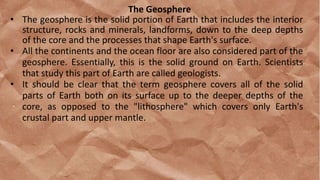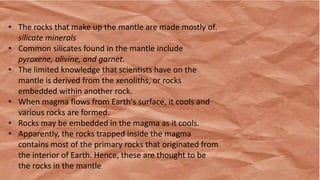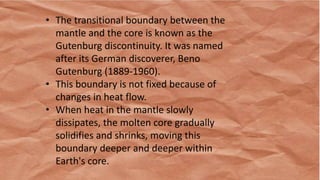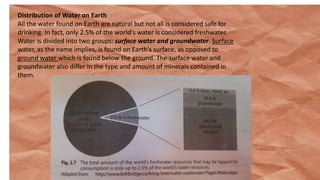The document discusses Earth's structure and composition. It describes the four main systems - the geosphere, hydrosphere, atmosphere, and biosphere. It then focuses on describing the geosphere and hydrosphere in more detail. The geosphere is described as the solid portion of Earth, including its internal structure and surface features. The hydrosphere is the total amount of water on Earth, including the water cycle by which water circulates between the oceans, atmosphere, and land. Water is found in different states and the cycle involves evaporation, condensation, precipitation, and the collection of water.

















